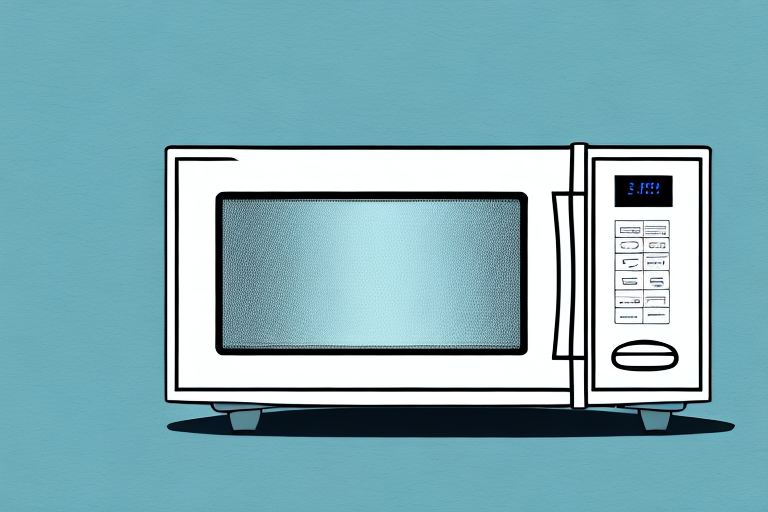As biometric authentication technology continues to grow in popularity, many mobile device manufacturers are now incorporating ultrasonic fingerprint sensors into their devices. However, despite their advantages, there are also several cons associated with this technology. In this article, we will explore the limitations, accuracy, reliability, and security concerns of ultrasonic fingerprint sensors.
Understanding the basics of ultrasonic fingerprint sensor technology
Unlike traditional optical sensors, ultrasonic fingerprint sensors use sound waves to scan the ridges and valleys in the user’s fingerprint. The device emits high-frequency sounds that bounce back and create a 3D map of the user’s fingerprint, which is then compared to a stored profile for authentication. Ultrasonic sensors typically offer better security than optical sensors since they are more difficult to fool with a replica fingerprint.
Ultrasonic fingerprint sensors are also more reliable in adverse conditions, such as when the user’s fingers are wet or dirty. This is because sound waves can penetrate through moisture and debris, whereas optical sensors may struggle to read the fingerprint in such conditions.
However, ultrasonic sensors can be more expensive to manufacture than optical sensors, which may make them less accessible for some devices. Additionally, some users have reported that ultrasonic sensors can be slower to authenticate compared to optical sensors, although this may vary depending on the specific device and implementation.
The pros and cons of fingerprint recognition technology
Fingerprint recognition technology has its benefits, including its fast and easy user authentication and the convenience of not needing to remember passwords. However, fingerprint recognition technology also has its cons, including the potential for false positives and false negatives, as well as the possibility of security breaches if user information is leaked or hacked.
Another advantage of fingerprint recognition technology is its versatility. It can be used in a variety of settings, from unlocking smartphones and laptops to accessing secure facilities and making payments. This makes it a convenient and efficient option for individuals and businesses alike.
On the other hand, one of the major drawbacks of fingerprint recognition technology is its lack of universality. Not all devices or systems are equipped with fingerprint scanners, which can limit its usefulness in certain situations. Additionally, some individuals may have difficulty using fingerprint recognition technology due to physical disabilities or injuries that affect their fingerprints.
How ultrasonic fingerprint sensors work
As mentioned earlier, ultrasonic fingerprint sensors emit high-frequency sounds that create a 3D map of the user’s fingerprint. The sensor then analyzes the ridges and valleys in the user’s fingerprint to create a unique profile that can be used to authenticate the user’s identity. This process typically takes only a few seconds, making it convenient for users who need quick and secure access to their devices.
One advantage of ultrasonic fingerprint sensors is that they are more secure than traditional optical sensors. Optical sensors can be fooled by fake fingerprints or even a high-quality photograph of a fingerprint. However, ultrasonic sensors are more difficult to trick because they use sound waves to create a 3D map of the fingerprint, making it much harder to replicate.
Another benefit of ultrasonic fingerprint sensors is that they can work even if the user’s fingers are wet or dirty. This is because the sound waves used by the sensor can penetrate through water and other substances, allowing for accurate readings even in less-than-ideal conditions. This makes ultrasonic sensors a great choice for devices that may be used in outdoor or industrial settings where users may have dirty or wet hands.
The limitations of ultrasonic fingerprint sensors
While ultrasonic sensors are generally more secure than optical sensors, they are not without their limitations. For example, ultrasonic sensors may not work properly for people with dry skin or cuts on their fingers, and they may be affected by dirt, oil, or moisture on the user’s fingers. Additionally, ultrasonic sensors may not work well in adverse weather conditions, such as extreme heat or cold.
Another limitation of ultrasonic fingerprint sensors is that they can be more expensive to manufacture than optical sensors. This is because ultrasonic sensors require more complex technology and components, such as piezoelectric transducers, to function properly. As a result, devices that use ultrasonic sensors may be more expensive for consumers to purchase.
The accuracy and reliability of ultrasonic fingerprint sensors
Ultrasonic sensors are generally known for their high accuracy and reliability, which is why they are popular in military and industrial applications. However, in consumer devices, there have been reports of false positives and false negatives, which may reduce their overall reliability. Additionally, some users have reported that the sensors may not work properly after extended use or exposure to environmental factors.
Despite these challenges, ultrasonic fingerprint sensors have several advantages over other types of sensors. For example, they are more secure than optical sensors because they use sound waves to create a 3D image of the fingerprint, making it harder to spoof. They also work well in wet or dirty conditions, which can be a problem for other types of sensors.
Researchers are currently working on improving the accuracy and reliability of ultrasonic sensors in consumer devices. One approach is to use machine learning algorithms to better distinguish between real fingerprints and fake ones. Another approach is to improve the design of the sensors themselves, for example by using multiple sensors to capture more data points and reduce the risk of false positives or negatives.
Factors that affect the performance of ultrasonic fingerprint sensors
There are several factors that can affect the performance of ultrasonic fingerprint sensors, including the user’s skin type, the temperature and humidity of the environment, and external factors such as dirt, oil, or moisture on the user’s fingers. Performance may also be affected if the user’s fingers are wet or if they are wearing gloves or other types of hand coverings.
Another factor that can affect the performance of ultrasonic fingerprint sensors is the thickness of the user’s skin. Thicker skin can make it more difficult for the sensor to accurately read the fingerprint, which can result in false readings or errors. Additionally, the quality of the sensor itself can impact its performance, with higher quality sensors generally providing more accurate readings.
It is also important to note that ultrasonic fingerprint sensors may not be suitable for all applications. For example, they may not be effective for individuals with certain medical conditions that affect the texture or moisture of their skin. In these cases, alternative biometric authentication methods may need to be used.
Challenges faced in implementing ultrasonic fingerprint sensors in mobile devices
One of the biggest challenges faced in implementing ultrasonic fingerprint sensors in mobile devices is the size and cost of the sensors. Ultrasonic sensors are generally larger and more expensive than their optical counterparts, making them difficult to integrate into smaller devices without compromising on other features. Additionally, the sensors may require additional power to operate, which can lead to reduced battery life in some devices.
Another challenge is the accuracy of the sensors. Ultrasonic sensors can be affected by external factors such as dirt, moisture, and temperature changes, which can lead to false readings or failure to recognize fingerprints. This can be a major issue for users who rely on the sensors for secure access to their devices.
Furthermore, the implementation of ultrasonic fingerprint sensors requires specialized hardware and software, which can be a barrier for some manufacturers. This can limit the availability of devices with ultrasonic sensors and result in higher prices for consumers who want this feature.
Comparison between ultrasonic and optical fingerprint sensors
While both ultrasonic and optical fingerprint sensors have their advantages and disadvantages, there are some key differences between the two that may make one more suitable for certain applications. For example, ultrasonic sensors are generally more secure than optical sensors, but they may not work as well in adverse weather conditions or on dirty or oily fingers. Optical sensors, on the other hand, are generally more compact and less expensive than ultrasonic sensors, but they may be more susceptible to false positives and require more frequent cleaning.
Security concerns with ultrasonic fingerprint sensors
While ultrasonic fingerprint sensors are generally considered more secure than optical sensors, there are still some security concerns associated with this technology. For example, if an attacker gains access to the user’s device or biometric data, they may be able to use this information to access other accounts or devices that use fingerprint authentication. Additionally, there have been reports of some ultrasonic sensors being fooled by 3D printed replica fingerprints, highlighting the need for ongoing improvements in the technology.
Potential drawbacks for users with certain medical conditions
Some users with certain medical conditions may not be able to use ultrasonic fingerprint sensors due to factors such as dry skin, cuts or blisters on their fingers, or conditions that affect the texture or appearance of their fingertips. For these users, alternative forms of biometric authentication, such as facial recognition or iris scanning, may be more appropriate.
Usability issues with ultrasonic fingerprint sensors in adverse weather conditions
As mentioned earlier, ultrasonic fingerprint sensors may not work well in adverse weather conditions such as extreme heat or cold, or if the user’s fingers are wet. This can be a significant usability issue for users who need quick and secure access to their devices in all types of weather conditions.
Potential impact of external factors such as dirt, oil, or moisture on sensor performance
External factors such as dirt, oil, or moisture on the user’s fingers can also impact the performance of ultrasonic fingerprint sensors. For example, if the user’s fingers are dirty or oily, the sensor may not be able to create an accurate 3D map of their fingerprint, leading to false positives or false negatives. Similarly, if the user’s fingers are wet or if they are wearing gloves, the sensor may not be able to create a clear image of their fingerprint, leading to authentication issues.
Ultrasonic fingerprint sensor vs facial recognition technology: Which is better?
Facial recognition technology is an alternative to fingerprint authentication that is becoming increasingly popular in mobile devices. While both technologies have their advantages and disadvantages, facial recognition may be more suitable for some users who cannot use ultrasonic sensors due to factors such as dry skin or medical conditions. Additionally, facial recognition may be more secure in some cases since it is difficult to replicate a user’s face. However, facial recognition technology also has its drawbacks, such as the potential for false positives or privacy concerns related to facial data.
Future developments in the field of biometric authentication technology
As biometric authentication technology continues to advance, we can expect to see ongoing improvements in the accuracy, reliability, and security of ultrasonic fingerprint sensors. Some potential areas for development include enhancing the sensors’ performance under adverse weather conditions and improving their compatibility with a wider range of skin types and medical conditions. Additionally, we may see the integration of multiple biometric authentication technologies into future devices, enabling users to choose the method that is most convenient and secure for them.
In conclusion, while ultrasonic fingerprint sensors offer several benefits in terms of security and convenience, there are also several cons and limitations associated with this technology. As the technology continues to advance, we can expect ongoing improvements in the accuracy, reliability, and security of these sensors, while also exploring alternative forms of biometric authentication that may be more suitable for certain users and situations.



